While at Camp Buckner being trained in Infantry tactics by the 101st Airborne Division, I only wish I had paid more attention to a particular white board presentation by then Major Dandridge Michael “Mad Dog” Malone (now deceased). He described in detail his concept of creating long range reconnaissance elements to be used in Vietnam as the eyes and ears of a Division when their Areas of Operation (AO) were too large to be controlled by Division assets. Later that same year he convinced a Two Star General, the First Field Force (IFFV) Commander in Vietnam, of the efficacy of his concept. MAJ (P) Malone was tasked to create E Company, Infantry (LRP), which years later would be re-designated, C Company (Ranger), 75th Infantry (Airborne), the unit in which I would later serve.
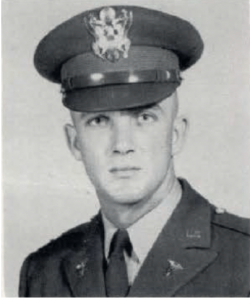
Each Company in the 101st ABN DIV was tasked to provide soldiers and officers for the newly created unit. Naturally, they sent their dregs and deadbeats. So, Mad Dog Malone went back to the IFFV Commander and was given free rein to select soldiers for his LRP Company, each of whom he required be a volunteer. Thus, began the tradition that everyone who joined the unit had to be an Airborne volunteer. Malone kept the officers so as not to malign their records but returned all the soldiers and then hand-picked his LRPs. Due to the size of the Company, its Commander would be a Major. Since Malone was promotable to LTC, he would not realize his dream of becoming its first Commander. That job fell to a Special Forces Major named O’Connor, who did agree for Malone to lead the very first team combat mission.
When enough men to create a Platoon were picked, the Platoon was sent as a unit to Recondo School run by Special Forces in Nha Trang. Upon graduation from Recondo, each Platoon was dispatched to various outposts throughout First Field Force. Since a helicopter had to be constantly re-fueled to reach his separate Platoons, MAJ O’Connor requested any suitable aircraft from the IFFV CDR. The Command Sergeant Major indicated they had two O-1 Cessna Birddogs that could be suitable for Direct Support to the LRP unit.
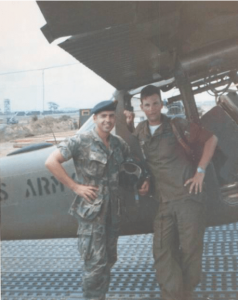
Once the unit was constituted together and performing team recon missions, the Birddog became the essential Command & Control (C&C) vehicle. Keeping meticulous records of my combat flights, I would eventually earn ten air medals in the Birddog flying C&C
After USMA graduation and completion at Mother Benning of Airborne, Ranger and the Basic Infantry Officer courses, I reported to Ft. Bragg, NC for my first duty assignment. I was a 2nd LT Platoon Leader, Company C, 1st of the 508th, 82nd All American Airborne Division. Shortly afterwards, I was selected by the Brigade Commander to create, train and lead its first ever Brigade Long Range Recon Patrol Platoon, with a primary mission of operating a mock Viet Cong prison camp and serve as aggressors during the Brigade’s Escape and Evasion training exercises.
I was also given free rein to select soldiers from the Brigade to fill my LRRP Platoon. Upon reviewing the military records, I was thrilled to pick one particular Sergeant who had served with a Ranger/LRP unit in Viet Nam! Little did I realize then that I would later serve with that same unit from which he had just returned. Yes, it’s a small world when all the puzzle pieces finally are put together!
The Brigade Commander gave me ten objectives to meet. I requested and he consented that I be given orders to Vietnam once I met those objectives. I was “called on the carpet” one time. I had decided to train my LRPs the art of the Australian Rappel; i.e., rappelling with one hand while facing downward and the other hand free to fire at any enemy below. Since there were no available mountain sides on which to train, I located a distant three-story barracks that had no side windows. Unfortunately, the barracks belonged to another Brigade Commander (BDE CDR), who drove by and witnessed us rappelling from the roof down the side of his building and reported me. After getting chewed out for a good three or four minutes with my ass completely figuratively bloody, I turned to retreat. The BDE CDR stopped me saying I was not dismissed, came around, stuck his finger in my face and, with a smirk said” Next time, don’t get caught!” I believe in the saying, “It’s better to ask forgiveness than to ask for permission.”
Having met all objectives, I received orders to Vietnam following completion of Jungle Warfare Training Course in Panama. I arrived in Vietnam on 18 July 1970 and reported to Bien Hoa for the 10-day In Country Indoctrination Center operated by the 25th Inf Div. On Friday, my third day there, I received orders to the 173rd (The Herd) ABN Brigade. The following evening at Bien Hoa Officers Club, I met a MAJ Hudson who was in jungle fatigues and bragging about commanding Charlie Rangers. He stated he had a good commo PLT LDR, a VMI grad for one of his combat Platoons and a Citadel grad for another but would be losing his 2nd PLT LDR due to his promotion to Captain. When he heard me exclaim I was an Airborne, Ranger, West Point grad and volunteering, he said if I could get to Ahn Khe in three days, he would cover transferring me into his unit. If it had not been for the war, I wouldn’t have even known about Vietnam, and I had no idea where Ahn Khe was. However, I immediately returned to the barracks and let my bunkmates know I was leaving. They warned me I would be AWOL! I responded, “What could they do to me? I’m already in Vietnam! Besides, it would be an embarrassment to the Army to report a West Pointer AWOL in Vietnam, so I would have time to arrange a new assignment.” I hitch-hiked on a C-123, a Huey and on a deuce-and-a-half truck in a convoy that drove through a VC ambush at the Ahn Khe pass.
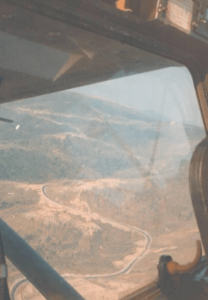
My introduction to combat was twiddling my thumbs with no weapon and bullets flying over my head! Well, MAJ Hudson kept his word, and I became 2nd PLT LDR, Charlie Rangers.
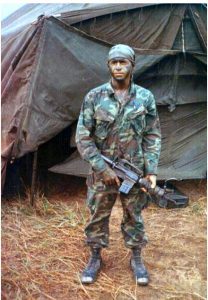
If the North Vietnamese Army could secret 3,000 troops across the borders of Laos and Cambodia and surround say a US artillery base, they would be willing to sacrifice 2,000 soldiers to kill two hundred Americans as a PR victory, based on the protests going on in the USA. However, GEN Giap, the head of the North Vietnamese, ordered his troops not to become decisively engaged with the US Forces because they had air superiority and fire superiority since they operated in battalion and division size operations. He hated the Rangers since six men would cause a year’s planning to go awry as the enemy thought they were the advance element of a large US force and would retreat back over the borders when ambushed.
Charlie Rangers employed six-man LRP teams to conduct ambushes (hatchets) in free-fire AOs after clandestine insertions by helicopter. Usually the teams were within firing support of artillery camps, which were eager to assist any teams in contact. A reaction force of a Platoon of Americans, a company of Republic of Korean (ROK) or an even larger unit of South Vietnamese forces stationed at nearby airbases replaced teams that made contact with superior enemy forces. Frequently, the only team communication was through a radio-relay site positioned on the highest mountain or via the airborne Birddog. Due to the constant stress, teams not making contact were extracted after four uneventful days in the field. After a few days respite, teams were re-inserted into a new AO.
A Charlie Ranger team made contact nearly every day of the year! We did not create these incredibly brave men; we only trained them. Charlie Rangers called in more B-52 strikes than any other unit in the history of the war.
On this particular mission, I was flying Command & Control to extract two 2nd Platoon teams that had been operating without any contact for their four days. As they were operating only a few kilometers away from each other, and there were no nearby landing zones (LZ) suitable for extraction, I directed both teams to a central, large LZ. At the time, our unit was under operational control to the 173rd ABN BDE, so we were being supported by “Casper” helicopters. ** Note the ghost on the nose of the flaring Huey. Teams “22” and “24” reached the appointed LZ and relaxed as they awaited extraction. ** Note in the picture below taken by a Ranger, their rucksacks are strewn about the LZ, and they’re not waiting under cover of the forest according to standard operating procedures.
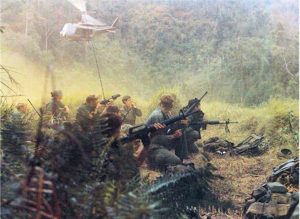
The teams popped “banana” yellow smoke as the first of two Casper Huey is descending for final approach with the second Huey above and out of the picture. The Radio/Telephone Operator is speaking with me in the back seat of the Birddog. His teammates are all reacting to my message of approaching enemy. My front-seat pilot, Ranger Jerry Bussell (now deceased) of the 183rd Reconnaissance Aircraft Company, spotted approximately sixty North Vietnamese enemy soldiers “di-di-mauing” (speeding) towards the yellow smoke.
Both teams were quickly and safely extracted by two Casper Huey, leaving no chance of friendly fire damage, whereupon two accompanying Casper gunships unleashed against the enemy. Once their full armament was expended, two artillery camps joined in the fray! Just another day in the life of a Charlie Ranger.

Gary,
Thank you for your courageous service. Rangers Lead the Way.
Geoff
Gary,
Thanks for sharing this memory. Seems like a lifetime ago. Where do we get these men?
I served in Charlie Rangers 3rd Platoon July 1970 ~ July 1971.
I receive and reply to email correspondences.
Rangers Lead The Way
Col D!
I’ve heard this story multiple times. I NEVER get tired of hearing the intense moments unfold. Bad ass!!!
Honored to have you in our lives. I’m grateful to know brave souls stand guard to protect “our walls.”
Looking forward to golfing soon…RLTW
B
Read the story. Truly awesome. Thanks for introducing me to Col D. Actually spoke with him today. Great honor and look forward to meeting him in November.
Thanks for telling this, Gary.
Bob Harper
These stories should be told more. I served with Ranger Regiment from 06-22, GWOT. I would have done anything to have these great Americans come speak with us before deployment. Symbols of what hunters are supposed to be!